Cruel Seas: Neuheiten
Cruel Seas ist jetzt erhältlich.
Cruel Seas Rulebook – £20.00
In Cruel Seas, you take on the role of a naval crew manning their fragile coastal craft as they head out day and night to take on both the sea and the enemy.
Command your flotilla of small ships as they head out to attack a convoy, drop off Commandoes for a behind-the-lines mission or task them with one of the other myriads of missions this small and versatile craft would perform.
Be it the Coastal waters of England or across the Channel to France, on to the Mediterranean waters or on further to the vast Island chains of the Pacific, Cruel seas will ensure your small ships see plenty of adrenaline-fuelled action!
FREE Special Miniature
As with many of our Bolt Action range of books if you order direct from our webstore you will receive a fantastically crafted model and Cruel Seas is no exception! Warlord sculptor Marco has produced this iconic piece, the conning tower of a German U-Boat breaking the surface…
Cruel Seas, the rules
Within the pages of Cruel Seas you’ll find the complete rules for small ship action plus full-colour guides, superb art courtesy of Osprey Publishing, history on your fleets, Campaign rules and special weaponry, Aircraft rules and more!
Get your copy signed by the Author and CEO of Warlord Games, Mr John Stallard, when you order within the next:
Royal Navy Fleet – £65.00
Great Britain never built a vessel as fast or as deadly as the E-boats, instead, fielding many types of MTB and motor gunboats. After a slow start, the Royal Navy helped by construction in the USA, Canada and India, built an extraordinary catalogue of excellent small boats, supported by larger vessels which gave serious firepower and, using the characteristics of each boat to maximum effect, fielded mixed formations supported by destroyers or powerful gun equipped LCTs. They generally fought at night and using radar and radiotelephone, coupled with RAF and fleet air arm support and even secret information from intercepts they fought the Kriegsmarine to a standstill and by 1944, with hugely superior numbers and technological advantage truly ruled any waters which they chose to dominate.
The British Royal Navy Fleet Contains:
- 2 x Plastic Early Vosper MTBs
- 2 x Plastic Mid/Late Vosper MTBs
- 2 x Fairmile D (resin and metal)
- 1 x Armed Trawler (resin and metal)
- 1 x Bristol Beaufighter Mk Ic (metal)
- Ship Cards
- Plastic Torpedo markers
Royal Navy Vosper MTB flotilla – £18.00
At the outbreak of war, Britain had 3 formed MTB flotillas, precious few to cover the world’s largest empire. But with judicious use of what were pre-war civilian boatyards and the huge resources of their empire and help from the USA, the Coastal Forces would in 1944 have 25,000 sailors in over 2000 small craft!
These Flotillas, enhanced by Commonwealth, Dutch, Norwegian, French, and other free forces sank over 400 enemy vessels, including 48 E-boats and 32 midget submarines. They also accounted for 32 axis aircraft and fired in total 1169 very expensive torpedoes. This impressive tactical achievement contributed mightily to the allied strategic successes. It ensured that Britain was not isolated for trade. It put a stranglehold on Axis Supply lines and ultimately formed a force that could not be resisted, so much so that by the D Day landings in 1944, the Kriegsmarine was impotent to resist.
Kriegsmarine Fleet – £65.00
Kaiser Wilhelm’s vision, indeed obsession, with building a vast fleet of dreadnoughts came to nought during the Great War. He knew that his excellent fleet could not risk significant battles with the Royal Navy, it was a one-shot weapon. The lighter units, particularly the U Boats, did most of the real work on a weekly basis.
The German Navy was only raised in 1871, with a brief to concentrate on the North Sea and Baltic Coasts. Perhaps because of its youth, the Kriegsmarine was quick to appreciate the power of the humble torpedo that could cripple or kill a vessel worth millions of marks. They were thus also keen to develop the promise of the torpedo boat, cheap, potentially deadly and of great use in restricted waters.
The German Kriegsmarine Fleet Contains:
- 2 x Plastic S-100 E-boats
- 2 x Plastic S-38 E-boats
- 1 x Vorpostenboot flakship (resin and metal)
- 1 x M-class minesweeper (resin and metal)
- 1 x Ju-87D Stuka (metal)
- Ship Cards
- Plastic Torpedo markers
Kriegsmarine E-boat flotilla – £18.00
The Schnellboat or ‘E Boat’ as the British Admiralty called them, E for enemy, was a truly formidable beast, in many ways incomparable in detail to the other nation’s boats.
In sheer size alone, the E boat was much, much bigger. Allied boats tended to be 70-80 feet in length, the E boat 115 feet long, and the laws of physics, though complex, favour a larger hull for speed over a shorter one.
German engineering also gave them another advantage, as when speed reached 25 knots, a crank mechanism when turned moved 2 side rudders to flare, symmetrically outward at 30 degrees, creating an air-filled hollow space, the so-called Lürssen effect. This gave three distinct advantages, greater speed, a reduction in the tell-tale wake of the speeding boat, and finally settled the boat in a more efficient plane, leaving the vessel shallower in the water, most useful in mine and torpedo infested waters and remarkable for a boat weighing in at 100 tons!
US Navy Fleet – £65.00
By 1941 there were 29 total PT’s total in the US Navy, by December ’43 there were 29 squadrons. Indeed, by the end of the war the small ships, PT’s LCI etc. numbered 7,000 craft of 80 types. Many Early PT boats had up to 4 torpedoes and 2 twin .50 Cal guns in powered mounting, a heavy load for the day. As with most American hardware, this was only the start! Soon a 20mm was added at the stern as standard, useful for surface or air action. Then, enterprising crews frustrated by strafing the tough Japanese barges to negligible effect mounted a USAAF 37mm automatic gun (acquired from an Air Cobra) and found it most effective!
Indeed, America had not been blind to the possibilities of the coming war and took great pains to watch and learn from her allies and foes so that when war came, America was ready to put into place a building program that dwarfed all the other navies combined and led to the naval dominance that she still enjoys today.
The US Navy Fleet Contains:
- 2 x Plastic Elco PT boat
- 2 x Plastic Higgins PT boat
- 1 x Coastal Cutter sub chaser (resin and metal)
- 1 x LCI-(L) landing craft (resin and metal)
- 4 x LCM-3 landing craft (metal)
- 1 x F4U Corsair (metal)
- Ship Cards
- Plastic Torpedo markers
US Navy PT boat flotilla – £18.00
On December 7th, 1941, the US Navy could only boast 3 squadrons of motor torpedo boats, or PT boats (patrol torpedo) as they were named. PT squadron 1 was based on Pearl Harbor and the 12 boats opened fire on the incoming Japanese bombers, claiming 2 planes downed for sure and others damaged. Squadron 2 was based in Manila Bay of the Philippines and had a similar introduction to their war, shooting down a few attackers and learning that fast boats were a tricky target for bombers. Squadron 3 was in New York working up and would later see great service in Guadalcanal.
The PT boats fought all over the globe, from Pearl Harbor to the Philippines, the Adriatic and Mediterranean and also in the English Channel. They achieved many successes, particularly in the last two years of the Pacific War they accounted for many stalking float planes and many hundreds of barges which were the lifeblood of the overextended Japanese army. This barge hunting was a gruelling business and needed a certain ruthlessness on the behalf of the American crews, Japanese soldiers and sailors being loath to surrender, hence a grizzly end to many a barge crew.
Contains: Six PT boats (3x Elco & 3x Higgins)
Imperial Japanese Navy Fleet – £65.00
Between the wars Japan reassessed its position with its navy, building the world’s first purpose-built aircraft carrier, the Hosho in 1921 and inventing its deadly fast and powerful type 93 24’’ oxygen fuelled torpedoes. They also decided that as their industrial might could not match that of the west, then they would have to have sharp, training tactics and a crew of superior quality to their foe, and for a while, achieved just this.
Their battleships and cruisers were of excellent quality and their growing fleet or aircraft carriers would, after Pearl Harbor, give them the edge in the opening phase of the Pacific War. Excellent training, use of the Long Lance torpedoes and aggressive use of nighttime fast attacks with their destroyers also gave the allies a bloody nose before they learned to counter these attacks.
Imperial Japanese Navy Fleet
Cruel Seas focuses on the cat and mouse hunts that happened nightly in the Philippines, Guadalcanal and the Solomon’s. They could be IJN sub chasers stalking a crippled US submarine, or mine layers playing their trade at night. Most commonly it will be Japanese barge convoys defending themselves in shallow water against rapacious PT boats. Turning the tables, a late war game could be played out with American landing ships and the terrifying Shin’yo Kamikaze craft.
The IJN, therefore, is an interesting mixture of the very sophisticated and the very amateur, boldness being a connecting factor whether in battleships or tiny craft. It is a do or die force, get in close and things will go well, dither or maintain the range of the allied technology and firepower will overreach you.
The Imperial Japanese Navy Fleet Contains:
- 6 x T-14-class MTBs (metal)
- 3 x Maru-Ni kamikaze boats (metal)
- 3 x Shin-Yo kamikaze boats (metal)
- 4 x large Sampan (resin and metal – two of each canopied boat)
- 1 x Escort Type Hei minesweeper (resin & metal)
- 1 x Aichi D3A ‚Val‘ (metal)
- Ship Cards
- Plastic Torpedo markers
Lighthouse – £15.00
Lighthouses are often mentioned in the diaries and memories of serving naval officers in WWII. As most encounters took place at night, it is understandable that the piercing finger of bright light would resonate with nervous, watching crews.
Lighthouses were, by their nature, places to navigate around for both sides, providing a real and reliable proof of the navigators skill, often open to doubt in the featureless sea.
Ruined Lighthouse – £12.00
Be it intentional or accidental, this newly ruined lighthouse will simply just remain there until the order of its restoration or removal comes through.
Merchant Tanker – £18.00
Tasked with the ferry of supplies such as food, fuel, steel, clothing to munitions and weaponry. Many nations were heavily reliant on such ships completing the journey and securing their goods. As a result, this made them obvious targets for the nimble torpedo boats.
Quelle: Warlord Games


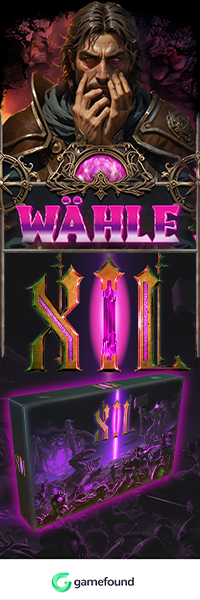
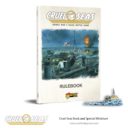

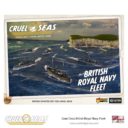
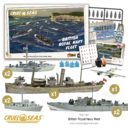
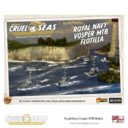
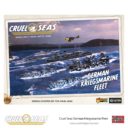
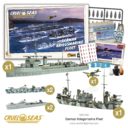
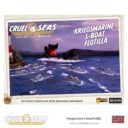
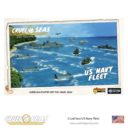
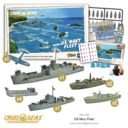
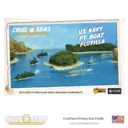
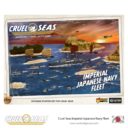
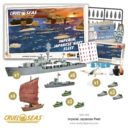
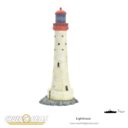
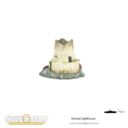
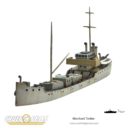

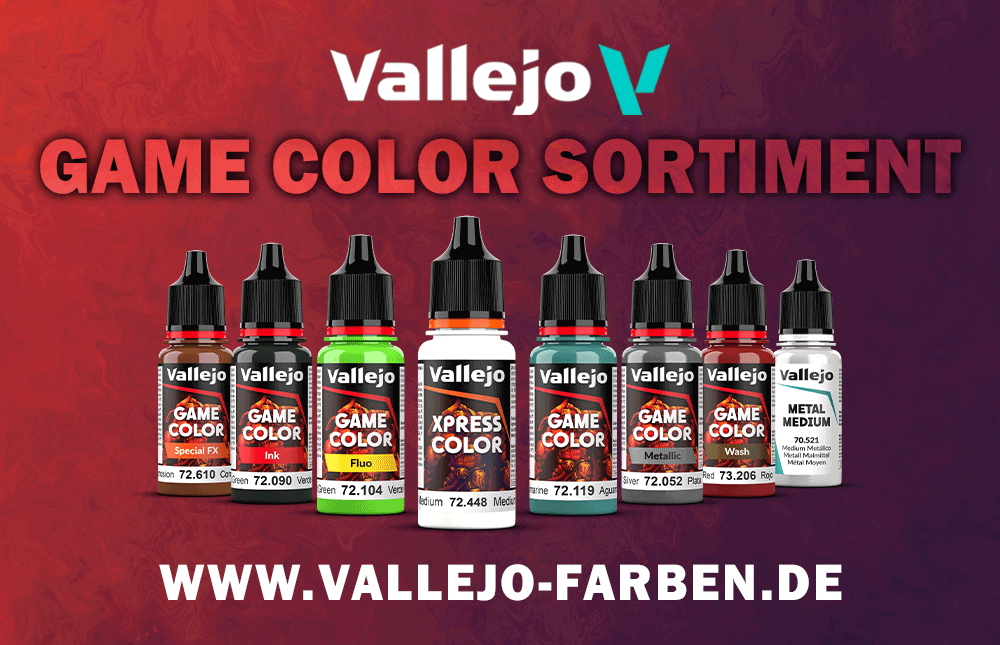
Schon irgendwie ein interessantes System. Und es werden doch hoffentlich auch nach und nach größere, namenhaftere Pötte erscheinen.
Rich Carlisle hat im Interview gesagt, es soll der Fokus auf Schnellbooten liegen. Zerstörer und grösser sind nicht geplant, die Reglen sind vermutlich auch nicht komplex genung dafür und zu grosse Modelle würden sich, beim Spielen, nicht „gut“ anfühlen. Aber 1:350 wäre auch nicht so weit von dem Maßstab, dass die Schiffe zu gross oder zu klein aussehen. (ein 100m Destroyer hat ja auch schon seine 33 cm, das grösste bisher sind so 70-75m)
Im gleichem Interview sagte er auch, dass die Blood Red Skies Flieger gut im Spiel aussehen, da sie ja durch die Flughöhe für den Betrachter ohnehin „grösser“ wären.
Persönlich hatte ich mich vorher mal umgeschaut und bei 1:350 hat man durchaus ein paar günstige Schiffe zum testen (<25€), wobei es auch schnell teuer wird. Evtl kaufe ich mal ein günstiger Kit und teste wie es mir gefällt, man muss es halt auf ein Wasserlinienmodell umbauen (diese sind auch wenn es weniger Teile sind leider meist von teuren Firmen).
Aber wenn die Community es wünscht kommen sicher Zerstörer, Kreuzer werden aber wohl zu gross.
Hmm, ich dachte, dass es auch eine Starterbox geben sollte.
Ansonsten finde ich den Maßstab zu groß gewählt bzw. den Fokus zu klein gesetzt. Wenigstens Zerstörer hätten die noch zulassen sollen, denn da gibt es bei den Nationen sehr viele schöne Modelle. Wäre immerhin interessanter als nur mit Torpedobooten und Transportern zu spielen.
Sehe ich ähnlich. Die Kompatibilität zu Blood Red Skies ist sicher ein Argument für den Maßstab, aber ich hätte in der Tat auch mehr Bock auf größere Pötte…
Im Shop von Warlord Games ist auch ein 2 Spieler Starterset für £65.
Das Starter Set beinhaltet 4 deutsche und britische Schnellboote, Regelbuch, Würfel,Marker, etc.
Es kostet 50 Pfund (nicht 65),der Titel ist „Strike hard! Strike fast!“
ich find den Maßstab ausgezeichnet gewählt.
– Auf der einen Seite hat das Spiel noch Luft nach oben. Man startet nicht schon mit dem Größten Pott. Was zur Folge hätte, dass man nur noch in die Masse geht.
– Zum anderen sind Flieger nicht nur olle Marker sondern richtige Modelle.
– Der Markt an großen Schiffen ist gesättigt und man würde einfach nur das Regelbuch brauchen. So kleine Beiboote habe ich beim schnellen googlen kaum gefunden. Man bietet also auch den Dioramabauern etwas an.
– Der für mich wichtigste Punkt ist aber, dass sich die dicken Dinger kaum wegen. Das War schon bei Dystopian Wars sterbenslangweilig und die hatten noch keinen Anspruch auf Realismus.
ich warte auf die Dez. und Jan. Ausgabe der Wargames Illu. da sind dann 3 Boote zuammen drinnen. Erstmal die anschauen
Es sind 2 Boote (eine Gussrahmen mit 2 Vosper MTBs oder 2 Schnellbooten).
Sieht schon ganz cool aus… auf jeden Fall mal was ganz anderes. Ich wünsch mir nur so sehr ein richtiges U-Boot Tabletop!
Finde ich sehr geil. Aber ich hab andere Pläne im Moment. Gerade das es sich nicht mit den fetten Schiffen beschäftigt finde ich gut.
Finde den Maßstab leider nicgt gut und würde lieber ein Spiel mit Zerstörern und Co spielen statt mit kleinen Schiffen. Sehr schade.
Ich selbst finde das gar nicht übel. Mit den großen Schiffen muss man für realistische Gefechte immer gleich vier Tischtennisplatten zusammenschieben. Ich fürchte aber, dass es sich nicht allzu gut verkaufen wird. Theoretisch braucht man aber ja auch nicht mehr, als jetzt schon veröffentlicht ist.